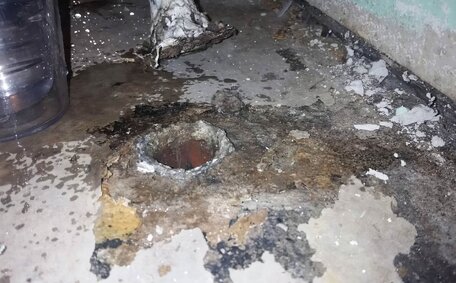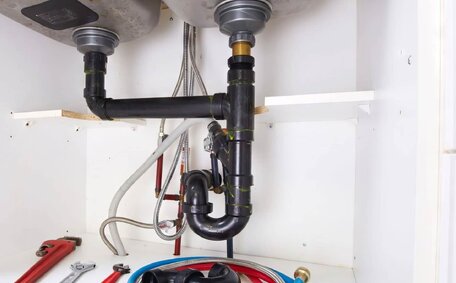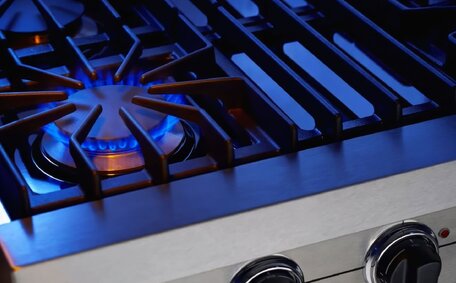Introduction to gas fitting regulations in Australia
Studying to become a gas plumber equips one with skills in installing, maintaining, and repairing gas systems, making such professionals in high demand. Achieving proficiency in gas standards and building energy regulations is imperative for compliance with Australian health, safety, and efficiency norms, necessitating a gasfitter license.
A knowledgeable gas fitter understands that licensing requirements and regulations for gas fitting differ across states and territories. However, the overarching goal across Australia is protecting public safety and maintaining compliance. Typical permits required for diverse gas fitting tasks encompass:
- Type B Gas Work Permit for complex and risky types of gas fitting work
- Approved Permit Holder status for routine gasfitting tasks
Only a licensed gas fitter with the proper permits can legally install natural gas appliance and perform a gas installation associated with extending, reconnecting, or commissioning gas systems. Licensing encompasses specialised technical skills, critical awareness of gas safety, and essential legal compliance. Using unlicensed technicians endangers residents and property, and compromises gas system integrity, incurring considerable legal risks.
When permits are required for gas fitting work
Permits are essential for many gas fitting jobs in Australia since almost all tasks beyond basic maintenance require licensing.
Type B permits are needed for complex, risky, or large-scale gas fitting tasks such as:
- Installing or replacing a type b appliance for improved gas supply use with Type B gas certification
- Extending, relocating, or altering a gas connection in the gas supply system
- the decommissioning or disconnecting of a consumer’s gas installation
Approved Permit Holders, often licenced gas fitters, can perform all types gas related routine tasks like swapping defective appliances, servicing systems, and connecting new gas supplies. However, they must also obtain authorisation for these activities.
Ensure that proper permits are obtained, as unauthorized gas fitting incurs significant penalties nationwide. Only licensed professionals may legally conduct specialized gas work, with required permits secured in advance.
Types of gas fitting jobs requiring permits
- Installing new gas appliances like stoves, ovens, heaters, or a hot water storage device - Type B permit needed
- Replacing existing gas appliances with different models - Type B permit needed
- Removing or altering decommissioned gas systems by capping supply pipes - Type B permit needed
- Servicing gas appliances and systems - Approved Permit Holder authorisation needed
- Facilitating connected gas services for new properties by integrating the gas meter to the gas distribution system - Approved Permit Holder authorisation needed
- Repairing leaks, faults, or defects in gas systems - Approved Permit Holder authorisation needed
These jobs cover situations where gas fittings are installed, modified, serviced, or fixed. Intricate gas system tasks must be executed by certified plumbers and gas fitters. Relevant permits certify proper qualifications and ensure compliance with safety codes and regulations across Australia.
Authorities issuing permits by state/territory
Gas fitting permits, licensed under regional authorities, are issued by different entities in each Australian state and territory:
- New South Wales - NSW Fair Trading
- Victoria - Victorian Building Authority
- Queensland - Queensland Building and Construction Commission
- Western Australia - Department governed by mines industry regulation and safety standards
- South Australia - Office of the Technical Regulator
- Tasmania - Consumer Building and Occupational Services, which is licensed under creative commons attribution 4.0 standards
- Northern Territory - NT WorkSafe
- Australian Capital Territory - Access Canberra
These government agencies oversee compliance with gas safety laws and regulations in their respective jurisdictions. They issue permits according to gas installations regulations, inspect work, investigate violations, and enforce penalties for non-compliance.
Central legislation entails gas safety and dangerous goods regulations, along with state-specific gas fitting codes, ensuring those with preliminary qualifications only pay for needed units. Permit applicants must have completed foundational qualifications, a critical step towards securing authorization for gas work.
Before starting work on a gas system, individuals should understand their local gas authority’s specific permit requirements for various tasks.
Qualification and licensing requirements for gas fitters
Pursuing a career in gas fitting requires completing the necessary training and certification, enrolling in the relevant units to ensure permit acquisition. Students focusing on a full-time study plan benefit from a tailored program, strategically choosing units to fulfill their certication criteria:
- A Certificate III in Gas Fitting which encompasses the required units for course students enrolling fulltime with a registered training organisation, for those dedicated to enrolling fulltime
- Supplementary units of competency relevant to type gas equipment tasks
- A specified amount of industry experience under supervision
- Applying for a gas work licence with the designated state or territory licensing board
In Tasmania, students pursuing a Certificate III in Gas Fitting must complete specific units and accrue at least 12 months of supervised work, a mandatory requirement for establishing themselves in the trade. Students in Western Australia will need to undertake units that fulfill the logbook requirements essential for licensing, ensuring their eligibility for work within the industry.
Essential ongoing training and class I skills verification must be completed to uphold the high standards expected of licenced gas fitters in Australia. Different classes of gas work licences authorise different activities like servicing, installation, maintenance and repair of consumer gas systems and appliances.
Safety regulations and reasons for permits
Gas fitting is governed by stringent safety regulations across Australia to prevent risks such as fires, explosions, gas leaks, and carbon monoxide poisoning. Key regulations include:
- AS/NZS 5601 Gas Installations - created through collaboration between Australia and New Zealand, these standards ensure the safe setup and utilisation of gas fixtures and networked systems
- Dangerous Goods Regulations 1985 - classifies LP gas as “dangerous goods” with strict handling rules
- Gas Safety Regulations and Acts - specific to each state/territory, enforced by gas authorities
These regulations underscore why gas fitting permits are crucial for public safety. Permits ensure that only qualified technicians complete work following prescribed procedures. In particular:
- Type B permits allow oversight of complex/risky gas jobs
- Approved Permit Holder status maintains standards for routine work
Mandatory permits allow gas authorities to monitor works, ensure adherence to safety codes, and issue penalties for non-compliance. Gasfitting without permits risks lives and breaches Australian regulations in serious ways.
Applying for required permits
To apply for permits related to plumbing and gas works in Australia, pay the prescribed fee and submit a permit application form, alongside your personal information, to the relevant governing body in your state or territory.
- A copy of your gas work licence
- Public liability insurance certificates
- Compliance history information
- Information regarding the gas fitting task for your licence approval
Permits are tailored to specific jobs and failing to comply results in penalties.
Upon approval, you can display all permit documentation onsite during authorised gas fitting operations.
Costs for obtaining permits
Gas fitting permit fees differ across Australian states and territories, but typical charges under the gas installations regulations include:
- Application fee - usually $100-150 depending on the jurisdiction
- Permit fees - can range from $250 up to $750+ for complex Type B gas work permits
There may also be additional charges for inspection, compliance certificates, and Other administrative processes associated with meeting the installations regulations 1999 for gas fitting permits and jobs.
For a detailed breakdown of permit fees in your area, consult the full fee list on your local gas authority’s website. Most publish detailed fee schedules on their websites with breakdowns for different permit types, job complexity, equipment specifics, and more.
Remember to itemise estimated permit fees in quotes to customers before commencing any gas fitting project. While the quoted estimates for permit fees may seem high, they help fund safety inspections and ensure compliance - providing quality assurance for gas jobs.
Gas fitting jobs not requiring permits
Although most gas fitting jobs in Australia require permits, some minor tasks do not. Exempt activities typically include:
- Replacing existing gas appliances, which means any with identical models
- Conducting routine servicing/maintenance that doesn’t involve system modifications
- Minor repairs such as fixing appliance defects or leaks in supply pipes
- Decommissioning appliances by turning off gas and securing the gas container supply lines
- Installing gas detection systems
Even for tasks not requiring permits, adherence to gas safety standards and regulations is necessary. Work can only be carried out legally by qualified, licenced gas fitters following proper procedures. Some exempt tasks may also need approval from distributors regarding interrupting supply.
Despite varying rules across Australia, the commitment to uphold strict practices remains to mitigate risks. Gas authorities allow minor exemptions but still monitor works to uphold public and property safety.
Working with licensed professionals
It’s imperative to hire only licensed gas fitters for work on gas systems and appliances in residential and commercial premises. Licenced technicians have undergone extensive training and assessment to be legally certified to perform this specialised work.
Employing unlicensed individuals to undertake gas fitting tasks, much like an unqualified motor vehicle technician, puts lives at serious risk. Without proper qualifications, these operators will not comply with gas safety regulations and could incorrectly install or repair appliances and pipe systems.
The consequences of dodgy gas work include gas leaks, explosions, poisoning, fires, damage to property, and even death. Unlicenced gas fitters also breach state laws and consumers have no legal recourse or insurance protections.
When engaging any tradespeople for gas fitting, consider your preferred licensed professionals always:
- Ensure they possess the required tradesperson’s licence for the specific gas work at hand
- Ask to see their gas work licence
- Verify licence details with your state gas authority
- Insist on the certificate compliance after the gas work is finished to confirm all work aligns with the regulatory standards
Hiring reputable professionals like Bankstown Plumbing guarantees all work meets Australian Standards and remains compliant through required permits and oversight. Don’t take risks with unlicenced operators - it could prove disastrous.
Penalties for non-compliance
Failing to comply with road traffic gas fitting regulations and permit requirements carries severe penalties across Australia. Conducting unauthorised gas work or using unlicensed technicians also breaches state and territory laws.
Penalties serve both to safeguard public safety and penalize operators without proper licensing. Fines under Victoria’s Gas Safety Act 1997 for instance include:
- Up to $19,826 for individuals
- Up to $99,132 for body corporates
In addition to substantial fines, gas authorities can take further actions such as:
- Stopping unsafe work and pursing injunctions
- Mandatory audits and increased oversight on future jobs
- Suspending, cancelling or refusing licences
- Pursuing prosecutions through courts
Neglecting proper permits and licensing rules ultimately endangers lives. All gas fitting practitioners must maintain standards. Using only certified professionals like Bankstown Plumbing guarantees compliance.






